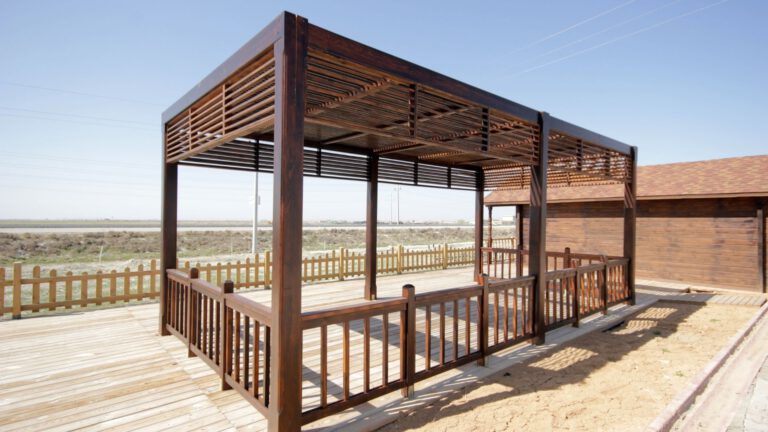Transforming Outdoor Spaces: The Art of Pergola Construction
When it comes to making the most of your outdoor spaces, there’s an architectural feature that has been gaining popularity and capturing the hearts of many homeowners: the pergola. Pergolas are more than just structures; they are works of art that enhance the aesthetics of your garden, courtyard, or patio. But what is the art behind pergola construction, and why is it transforming outdoor spaces? Let’s dive in.
The Charm of Pergolas
Pergolas have a history that dates back to ancient civilizations like Egypt, where they provided shade in scorching temperatures. This rich historical context adds an element of timeless elegance to any garden or outdoor space. These simple yet elegant structures, with their slatted roofs and sturdy pillars, can evoke emotions ranging from the romance of Mediterranean vineyards to the serenity of an English garden.
Design and aesthetics
While the basic framework remains consistent, the design variations of pergolas are numerous. Some homeowners prefer classic designs with unembellished beams and posts, while others may lean towards ornate designs that reflect personal tastes or mimic the architectural features of their homes.
The beauty lies in the flexibility. You can choose the type of wood, finish, and even the spacing between the slats on the roof. Some prefer a tighter arrangement for better shade, while others might opt for broader spacing to let in more sunlight or grow climbing plants.
Versatility and Functionality
Pergolas aren’t just pretty to look at; they’re incredibly functional. Depending on your personal preference, you can use them as:
- Shade providers: Especially during the warmer months, pergolas can offer a comfortable shaded area for relaxation.
- Plant supports: Many love to decorate their pergolas with climbing plants like roses, grapes, or ivy, enhancing the garden aesthetics.
- Outdoor living areas: With the right furniture and accessories, your pergola can become an ideal spot for dining, reading, or simply unwinding.
The Art of Pergola Construction
Constructing a pergola requires precision, knowledge, and an understanding of architectural principles. Here are some considerations that experts prioritize:
- Material Selection: The choice of wood is crucial. Materials like cedar, redwood, and pressure-treated pine are popular due to their durability and resistance to rot and pests.
- Foundation: A strong foundation ensures the longevity of the pergola. Using concrete footings or anchors helps keep the structure stable.
- Spacing and Sizing: It’s essential to balance the size of the pergola with the space available. A well-proportioned pergola complements an outdoor space without overwhelming it.
- Durability and Maintenance: Seasonal changes can impact wooden structures. Hence, using weather-resistant finishes and occasionally inspecting for damages is key.
Not a DIY Project
Though constructing a pergola might seem tempting as a DIY project, it’s a task best left to professionals. Proper construction requires a deep understanding of load-bearing capacities, material behaviors, and spatial aesthetics. An improperly built pergola could pose safety hazards and might not stand the test of time. Hiring experts ensures that you get a structure that is both beautiful and built to last.
Final Thoughts
The art of pergola construction lies in its harmonious blend of form and function. These structures are transformative, adding charm, character, and comfort to any outdoor space. Whether you’re seeking a quiet, shaded nook to read your favorite book or looking to beautify your garden landscape, a well-designed pergola might just be the answer.
Remember, while the allure of adding a personal touch is strong, safety and durability should never be compromised. Engage with professionals who understand the intricacies of pergola construction, and you’re sure to have an outdoor masterpiece that will be the envy of your neighbors for years to come.






